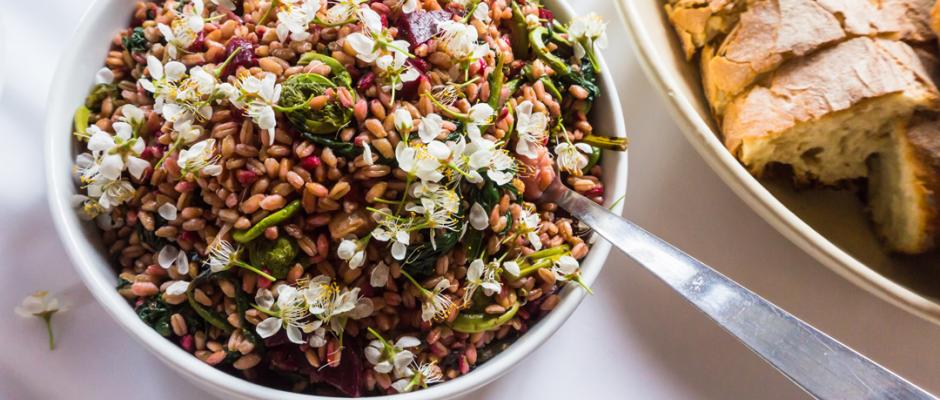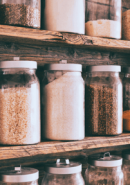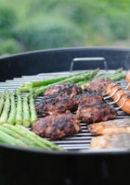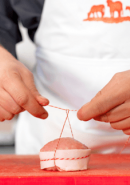Farro is an ancient whole wheat grain that has re-surfaced in the recent surge and popularity of “ancient grains” such as quinoa, millet, amaranth, kamut and spelt. Ancient grains have taken a spotlight in today’s nutritional market because these unchanged, heirloom varieties of wheat can be traced back centuries and have remained untampered with. They have not been constantly bred and changed as our common modern wheat varieties have been. Farro, like other ancient grains, have maintained their nutritional integrity from their ancient Roman roots and has continued to influence modern meals of today. They maintain their nutritional reputation and have proven many health benefits that have made farro even more popular with today’s health and food enthusiast. Here are 6 examples of farro’s health benefits.
- Farro is high in fiber, good for digestion and beneficial for preventing sugar or insulin spikes and dips. It also helps clear arteries of plaque buildup and supports healthy gut environment.
- Including farro in your diet will help improve your immunity and heart health. It also fights against chronic diseases like diabetes and cardiovascular disease and obesity.
- Farro is a good source of plant based protein, providing just the same amount of most legumes and bean.
- Farro is high in B vitamins
- Farro is a good source of antioxidants
- Farro provides iron, magnesium and zinc, important nutrients that are often removed in processed foods.
In addition of all the health benefits of Farro, it is also delicious.
For those who are not too familiar with Farro, it has an earthy, rich and nutty taste with a satisfying chew and bite to the grain. The savory nutty profile has subtle undertones of cinnamon. Its versatility makes farro an important staple that can be used in soups, pastas, breads, cereals, salads and can easily and cleverly be incorporated into any meal.
As with most ancient grains it is important to soak the grain for 8 hours or overnight to neutralize the phytic acid and release the enzyme inhibitors making them much easier to digest and making the nutrients easier to absorb in your body.
Once the grain is soaked and rinsed it is ready to be simmered in a large pot of slightly salted water, stirring it every now and then to prevent clumping and sticking to the bottom of the pan. I always suggest cooking farro until its al dente then rinse well under cool water and drain well. The cooked farro can then be portioned for several applications. A handful of cooked, cooled and seasoned farro makes an excellent addition to any salad. Substitute Arborio rice with cooked farro in making risotto style dishes popularly referred to as “farrotos”. Further cook, pre-made farro in almond or coconut milk until soft and add cinnamon and berries for healthy breakfast or dessert option. The list of menu options can go on and on, but I have included one of my favorite farro recipes for you to try at home:
Farro Salad with roasted butternut squash & wild mushrooms
Ingredients
- 10 ounces farro (about 1 1/2 cups)
- 1 small to medium butternut squash, peeled and cube into ½ in cubes
- 1 pound of mixed wild mushrooms, roughly chopped
- 2 ribs celery, small dice
- 2 carrots, peeled and diced
- 1 medium onion, peeled and diced
- 1 tablespoon fresh picked thyme leaves
- 2 tablespoons finely chopped Italian parsley
- 1 tablespoon apple cider vinegar
- ½ cup dried cranberries
- 4 T extra virgin olive oil
- Salt and pepper to taste
Direction
1. Soak farro overnight and rinse well with cool water
2. Cook farro in a pot of boiling salted water until tender, and simmer for about 20-25 minutes, or until al dente. Drain, and rinse in colander under cold water.
2. Toss butternut squash with a tablespoon of extra virgin olive oil, salt, pepper & fresh grated nutmeg and spread evenly in a single layer on baking sheet. Toss cut mushrooms with 2-tablespoon extra-virgin olive oil, salt and pepper and spread evenly in a single layer on a second baking sheet.
3. Roast both trays in 400-degree oven until squash is tender and mushrooms become golden (about 20 minutes, cooking times may differ between vegetables). Remove and set aside.
4. Meanwhile, in sauté pan, add one-tablespoon extra-virgin olive oil, carrots, celery and onion and gently cook over medium-low heat until tender. Add thyme, salt and pepper to taste.
5. Combine farro, vegetables, cider vinegar, and dried cranberries chopped parsley and re-season to taste. Serve warm or room temperature and Enjoy!




